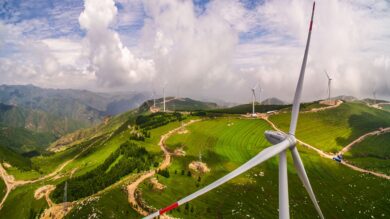Growth of renewables
Wind and solar power have been growing faster than fossil fuels, although from a low base and with the benefit of government subsidies in many regions. Now, in many situations, they are becoming competitive with fossil fuels and are poised to deliver substantial shares of energy.
The growth of renewables has exceeded pretty much all forecasts. There has been double-digit growth for wind and solar in the past few years and because the manufacturing costs have come down as well, cost reductions have been about 80% in solar and about 50% in wind. However, what that ignores is the cost of intermittency because, of course, the sun does not shine all the time and the wind does not blow all the time. Therefore, in many places the existing grid and the existing fossil system are used to back up supply when energy from renewables is not available.
By 2026, global renewable electricity capacity is forecast to rise more than 60% from 2020 levels to over 4 800 GW – equivalent to the current total global power capacity of fossil fuels and nuclear combined. Renewables are set to account for almost 95% of the increase in global power capacity through 2026, with solar PV alone providing more than half. The amount of renewable capacity added over the period of 2021 to 2026 is expected to be 50% higher than from 2015 to 2020.
China remains the global leader in the volume of capacity additions: it is expected to reach 1200 GW of total wind and solar capacity in 2026 – four years earlier than its current target of 2030. India is set to come top in terms of the rate of growth, doubling new installations compared with 2015-2020. Deployments in Europe and the United States are also on track to speed up significantly from the previous five years. These four markets together account for 80% of renewable capacity expansion worldwide.
Read the report (https://www.iea.org/reports/renewables-2021)
Renewables 2021 is the IEA’s primary analysis on the sector, based on current policies and market developments. It forecasts the deployment of renewable energy technologies in electricity, transport and heat to 2026 while also exploring key challenges to the industry and identifying barriers to faster growth. While renewables continued to be deployed at a strong pace during the Covid-19 crisis, they face new opportunities and challenges. This year’s report frames current policy and market dynamics while placing the recent rise in energy and commodities prices in context. In addition to providing detailed market analysis and forecasts, Renewables 2021 also explores trends to watch including storage, producing hydrogen from renewable electricity, stimulus packages, aviation biofuels and residential heating.



